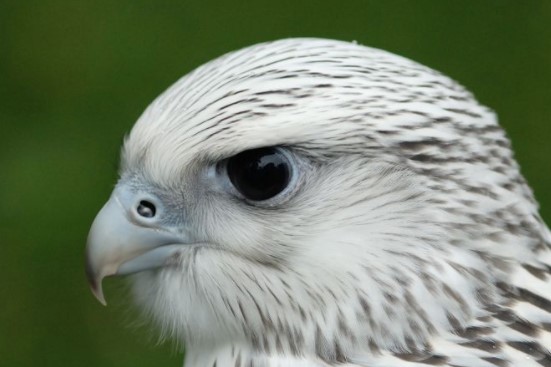Gyrfalcon is a formidable bird that has long been used in Russia as a hunting bird. A keen eye, powerful muscles, and a strong key – all this makes the gyrfalcon great predators, almost never missing the intended target. Gyrfalcons lend themselves to taming, however, even living with a person, they still retain their independence and obey only those whose superiority over themselves they voluntarily admit.

- Female gyrfalcons are almost twice as large as males in size and weight.
- The gyrfalcon is the largest bird of the falcons.
- The total body length of the gyrfalcon reaches 60 centimeters, and the wingspan is 135 centimeters.
- Gyrfalcons must eat about 200 grams of food every day – most often flying birds become their prey, which they grab right in the air, diving on top of them.
- The main prey of gyrfalcons is partridge.
- Gyrfalcons rarely build their own nests – they prefer to occupy the dwellings of other birds, especially buzzards and ravens. The diameter of the nest is about a meter.
- In the Middle Ages, gyrfalcons were highly prized as excellent hunting birds.
- In Russia, gyrfalcons are often caught by poachers in order to then sell the birds abroad for an average of $ 30,000.
- The northernmost territories in which the gyrfalcon live are Greenland, Franz Josef Land, and Spitsbergen.
- Gyrfalcons choose a pair for themselves once and for life.
- Gyrfalcon chicks become completely independent from their parents at the age of 4 months.
- In the wild, gyrfalcon lives up to two decades.
- Gyrfalcon is a formidable predator, it is able to protect its offspring even from a bear if required.
- Under natural conditions, gyrfalcons almost never get sick, but in captivity, they can get infected by people with infections to which they have no immunity.
- There is a known case when families of gyrfalcons occupied the same nest from the 17th century to the present day, gradually replacing each other.
- In the past, the gyrfalcon was considered a very valuable bird – these birds were presented to the rulers of other countries, especially foreign khans and sultans. In exchange for the gyrfalcon, they could easily give a good horse.
- Gyrfalcon can accelerate up to 100 meters per second, chasing its prey.
- Gyrfalcons rise vertically into the air, and not in a spiral, like most other birds.
- Thanks to their keen eyesight, the gyrfalcon can spot potential prey more than a kilometer away.

